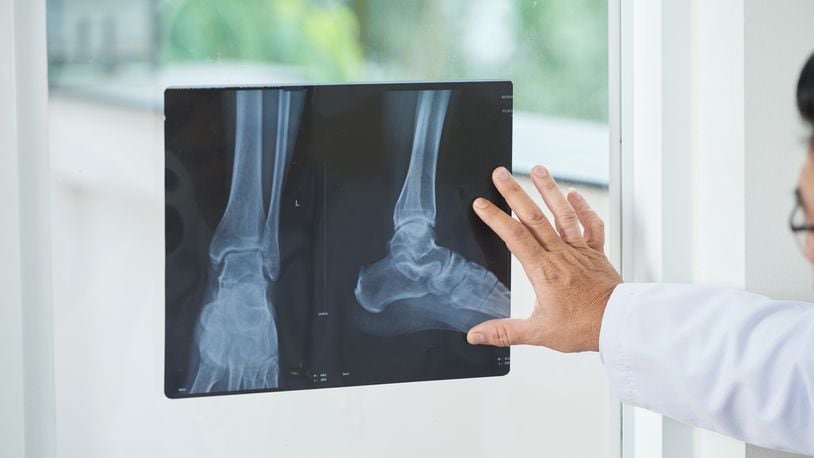Many people do not realize that regular exercise is necessary for bone health. In fact, inactivity is a known risk factor for developing osteopenia and osteoporosis, or low bone mass. Bone is living tissue, and responds to changes that occur with loading, as happens when lifting weights and activities where the body is moving upright such as with walking.
Stronger bones reduce injury risk as we age. For example, a well-conditioned person who takes a fall is much less likely to suffer serious injury than a person who is out of shape. Unfortunately falls and the fractures that can result are a leading cause of disability and death among older Americans.
Research in this area shows that staying active throughout life reduces the number of hip fractures experienced by older people by nearly one half.
Consuming a healthy diet, including getting enough calcium and vitamin D is another important way to help maintain bone density. Healthy bones are both strong and flexible, important factors that prevent them from fracturing under stress.
Crucial to bone health is its collagen matrix, a foundation of nutrients and minerals that allows them to expand, contract and repair without breaking. Smoking and/or alcohol should be avoided as they are detrimental to bone health. Your doctor or a registered dietician can advise you as to the amount of nutrients appropriate for your needs.
Allow time for your body to gradually strengthen. With resistance training, it is best to lift lighter weight loads and move slowly throughout each repetition when first starting out. Eight to12 repetitions and one to two sets of each exercise are typically sufficient to begin seeing progress.
All major muscle groups should be worked, but you may break this up into smaller segments, targeting different muscles on different days. This gives you time to see how your body is responding and allows you to become familiar with proper form. There must be sufficient overload to the muscle/bone in order to create a positive adaptive response. Put simply, there should be a gradual increase in the amount of weight lifted over time.
Body weight resistance exercises include squats, lunges, pushups and pullups among others. Other exercises can be performed using dumbbells, bands, bars or machines.
Cardiovascular (aerobic) weight-bearing activities: Examples are walking, hiking, light jogging, skating, dancing and/or low-impact aerobics classes. As with resistance training, if you are unaccustomed to exercise, build strength and endurance gradually.
Walking as little as three times a week can benefit the bones if you have been sedentary. Examples of non-weight-bearing activities include swimming and biking, which although can be good for the heart, rarely provide bone mineral density.
Marjie Gilliam is an International Sports Sciences Master certified personal trainer and fitness consultant. She owns Custom Fitness Personal Training Services LLC. Send email to marjie@ohtrainer.com.
About the Author
